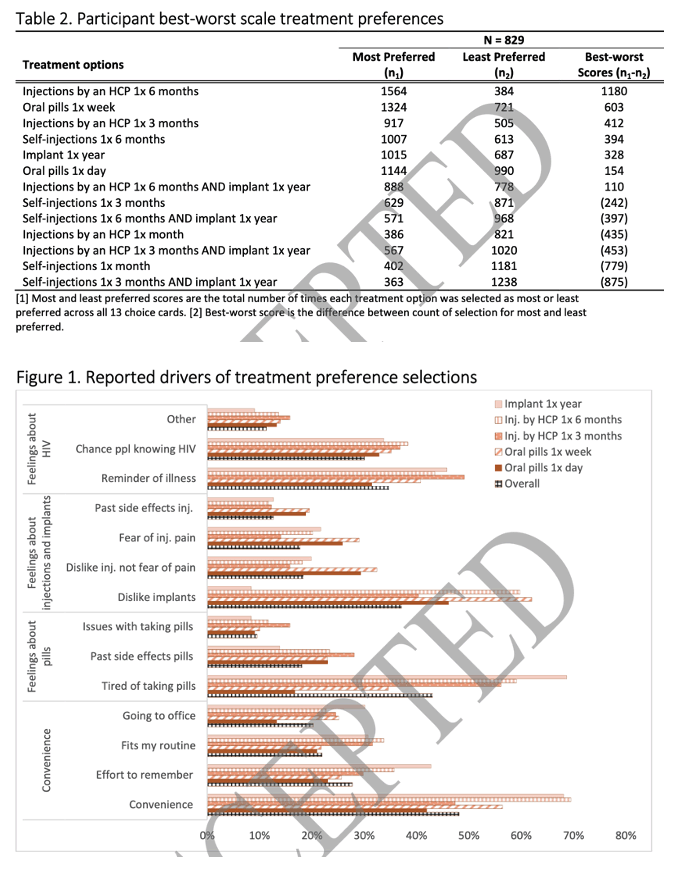| |
Patterns of HIV treatment preferences (oral, LA, implant…) among people with diverse demographic, social, and behavioral characteristics who are living with HIV in the United States
|
| |
| |
Download the PDF here
Abstract
Background:
New dosage form and frequency options may improve HIV treatment outcomes and reduce disparities in access and use.
Methods:
People with HIV (PWH) in the US completed a demographic and discrete choice experiment survey of preference for 13 hypothetical HIV treatment options: daily and weekly oral tablets; 1-, 3-, or 6-monthly injections by self or a health care provider; yearly implant; or combinations. Best-worst scaling and a latent class model were used to analyze overall preference choices and for groups of individuals with similar patterns of preferences; the model also predicted uptake of products.
Preferences of treatment delivery options were assessed using a Best-Worst Scaling (BWS) approach.41,42 Thirteen choice cards were constructed based on a balanced incomplete block design (BIBD) consisting of a subset of four treatment delivery options that asked participants to choose the best and worst option in each task
Results:
Among the diverse 829 respondents, weekly oral tablets and 6-monthly injections by an HCP were significantly more favored than daily oral tablets. Convenience of the treatment and being tired of taking pills were the top drivers of preference responses. Latent class analysis identified four groups of respondents with distinct preference patterns; approximately two-thirds belonged to groups strongly preferring products other than daily oral tablets. The modelled uptake of a monthly pill, yearly implant, 6-monthly Health Care Provider (HCP) injection, oral daily pill, and 3-monthly HCP injection were 24%, 24%, 24%, 18%, and 11%, respectively.
Conclusions:
Patterns of HIV medication preference can inform development of new forms of HIV therapy products as the majority of patients do not prefer the currently most available treatment option of daily oral tablets. Looking beyond population-level preferences and into similar groups of PWH increases the ability to develop patient-centered products to fill gaps in care and increase treatment effectiveness.

|
|
| |
| |
|
|
|